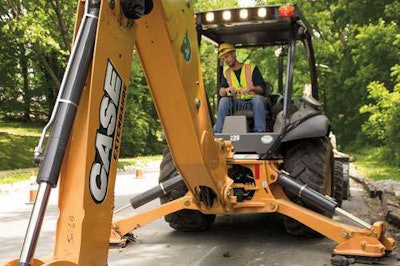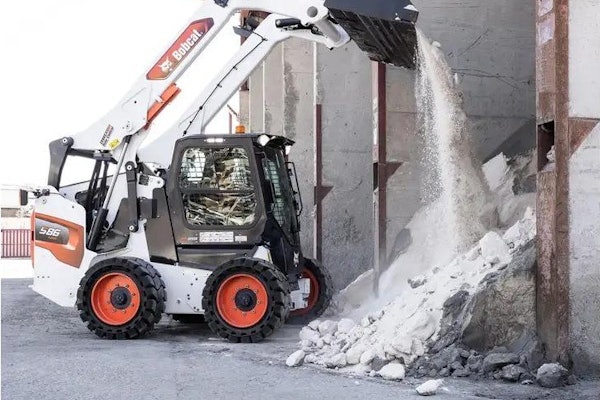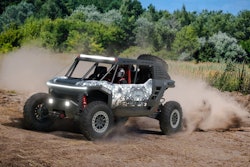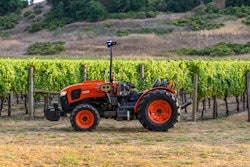
Buying any kind of construction equipment is a large investment for all landscapers. To help with the buying process, Case Construction Equipment offered these tips on how to buy a backhoe loader.
Tip 1: Ask the right questions
A few of the very first questions you need to ask yourself when specing out a backhoe loader are: What type of applications will the machine be used for? What type of materials are being moved? Will the machine be roaded or trailered? How many people will be operating the machine and what are their preferences?
Tip 2: To extend or not to extend?
The next step is determining what kind of dig depth and reach is needed. This will help determine if a standard arm length is sufficient, or if an extendahoe option is required.
The extendahoe is a popular option because, depending on if the operator is trenching or lifting/placing objects, you want to make sure you have the correct reach for different applications. Ensuring you have the correct reach also helps machines stay as far away from the trench it is digging as possible – which is important for safety and trench integrity.
The extendahoe option is also important if there’s a specific dig depth that must be met or if you’re handling more work in northern climates. Some Southern states will focus more on the standard hoe length because they don’t need to place things as deep as those in the cooler climates.
Tip 3: Hydraulically speaking
Next, do you plan on using the machine in more versatile ways? You could consider a thumb on the backhoe or a 4-in-1 bucket on the loader, among other attachments.
It is important to make sure you have the right auxiliary hydraulics in order to properly operate an attachment. Some attachments require unidirectional hydraulics, while others require bidirectional hydraulics. Bidirectional hydraulics to the backhoe flow two ways for use with thumbs, augers and swivel buckets. Unidirectional hydraulics are designed for operating attachments with one-way hydraulic flow, such as breakers and compactors. Some manufacturers offer a method of regulating the hydraulic flow in a unidirectional setup for optimal attachment operation. Take note that bidirectional hydraulics should not be used on unidirectional attachments as switching the flow could damage the attachment. This is why, if you are running multiple attachments, a combination hydraulics set-up is ideal as owners can then switch back and forth between unidirectional and bidirectional as needed.
Tip 4: Smooth ride
Another key consideration for specing a backhoe is whether the operator will be roading or trailering the machine. This will dictate whether or not you want to add optional Ride Control. If you are going to be frequently roading the machine or working extensively in load-and-carry applications, add Ride Control and a heavier front counter-weight to reduce material spill and increase operator comfort.
Tip 5: Strength in a smaller package
If operators will primarily be using the backhoe for lifting and placing objects, some machines come with special lift features. It is important to make sure your machine has ample power to do the proper lifting and craning required. If lifting and breakout performance are more important than dig depth and reach, by adding a feature such as Power Lift, you may be able to choose a machine slightly smaller than what you were previously operating.
Tip 6: Looking on the inside
Operator comfort should not be forgotten. For example, Case’s Comfort Steer reduces how many times an operator has to turn the steering wheel to get the tires in full turn while in first and second gear. Also, an air suspension seat will give the operator a much more comfortable ride while roading.
Tip 7: Maintaining control
Another key consideration when buying a backhoe is making sure the operator has the right controls. Considering who your operators are is important in understanding what is right for them – as well as the job at hand. Select a machine where the operator can adjust the controls to be more productive.
If you are purchasing a machine and have a lot of operator turnover, or moving up to a backhoe from a smaller machine and want something that is intuitive, order pilot controls and ensure the control pattern selector is included.
Another simple, yet important, consideration when specing a backhoe is understanding the working conditions. Equip your machine with four-wheel drive if working in rugged off-road or otherwise adverse conditions. And always account for the weather conditions to determine if you need a cab or a canopy.









